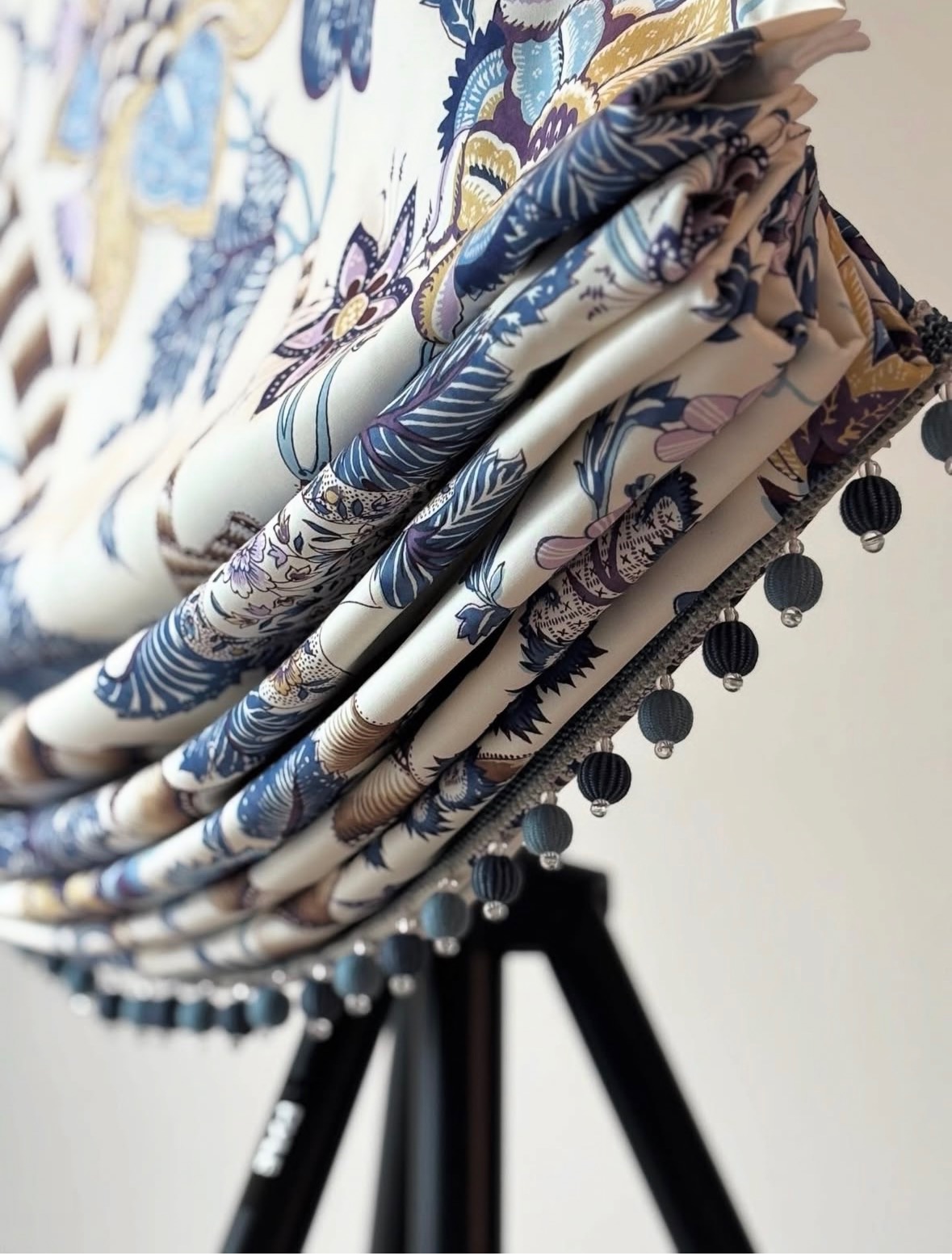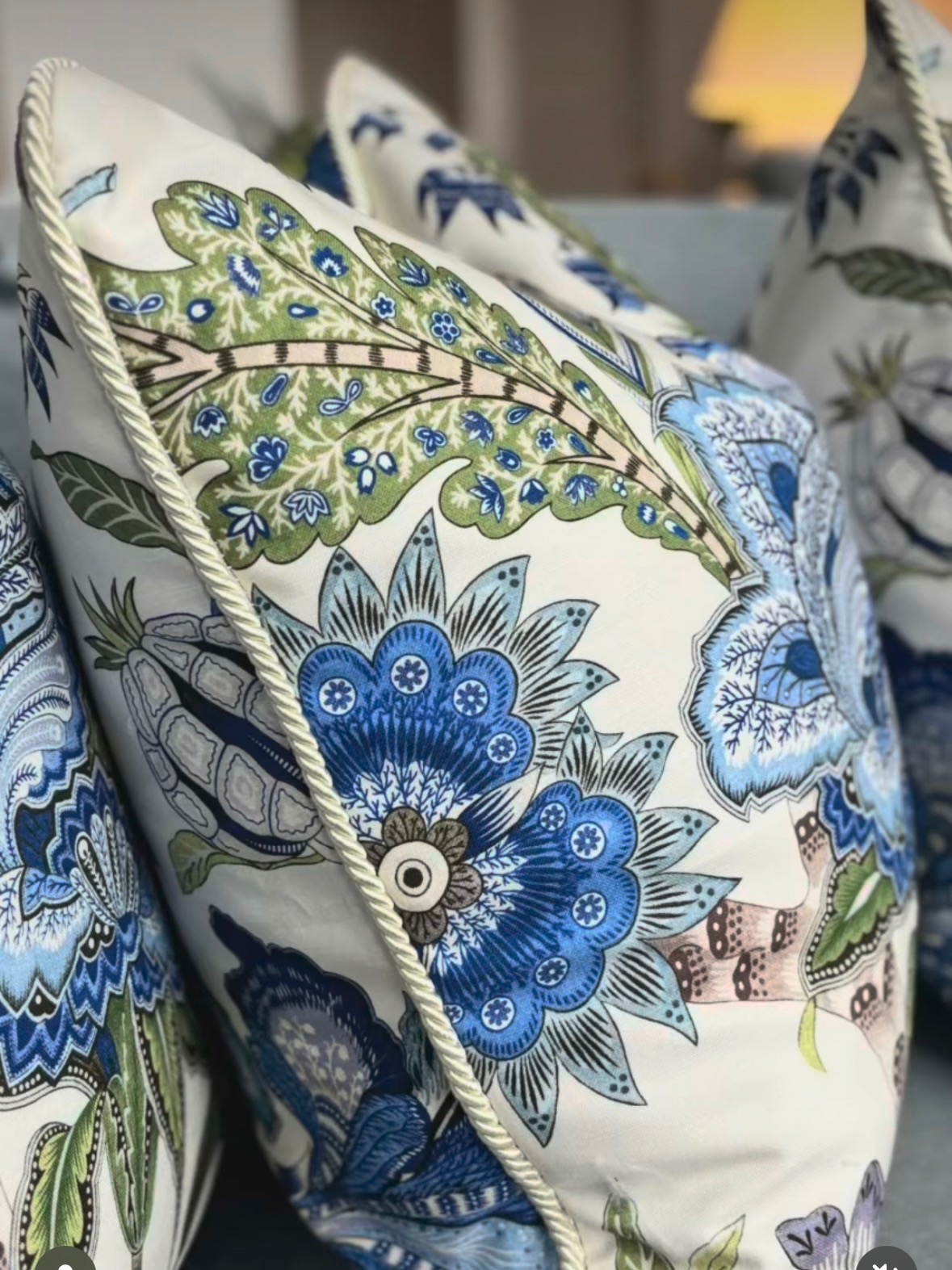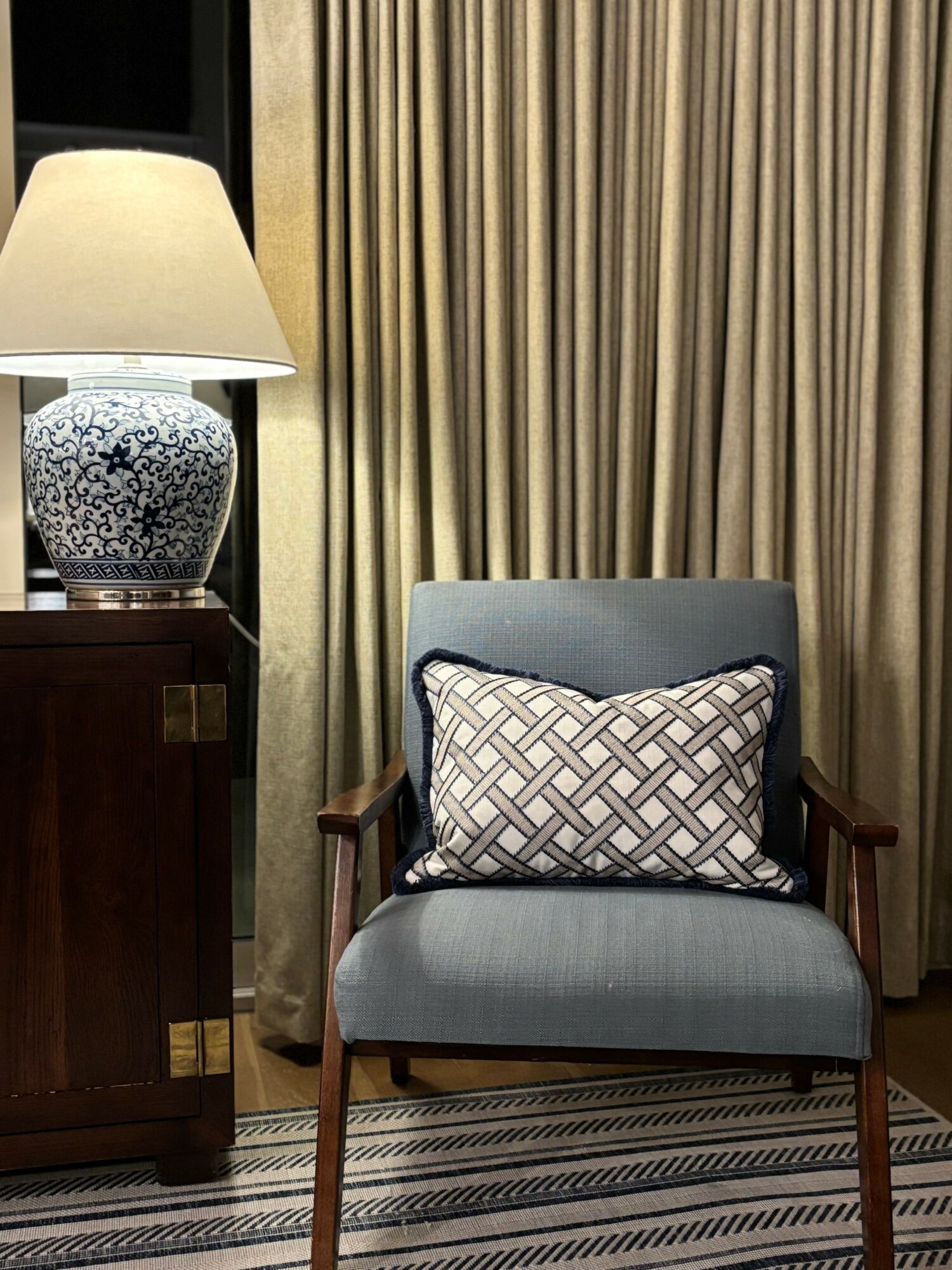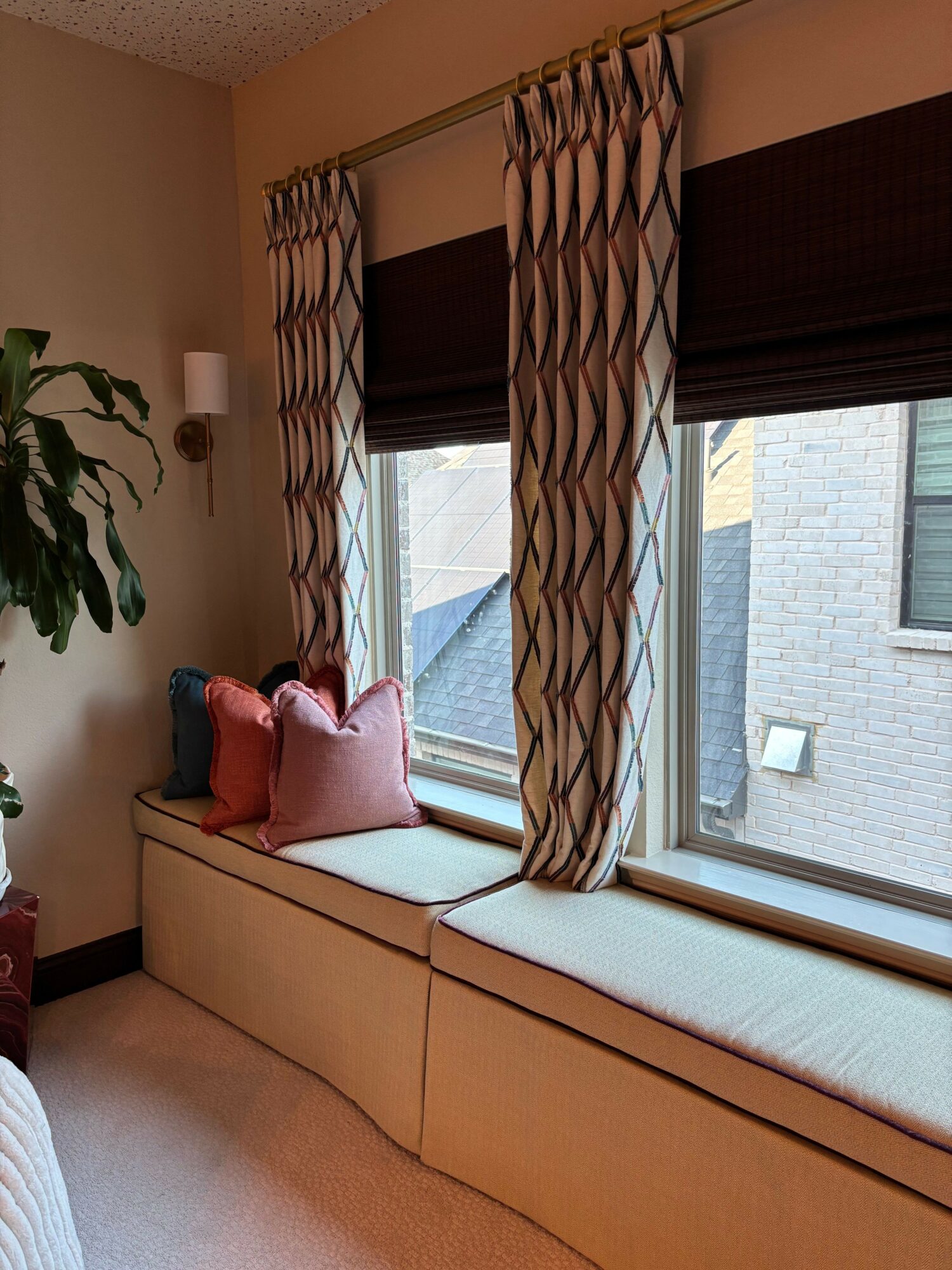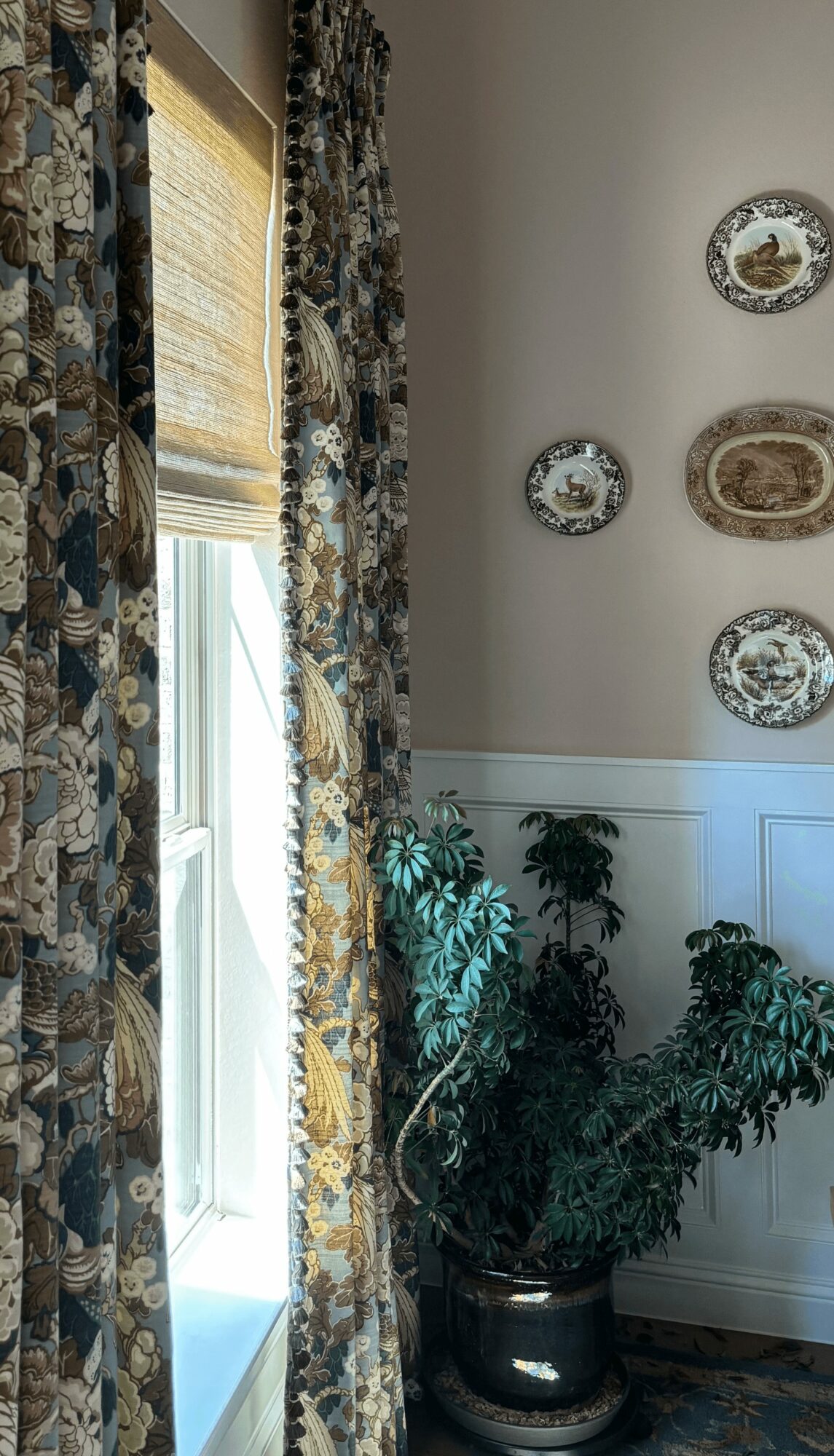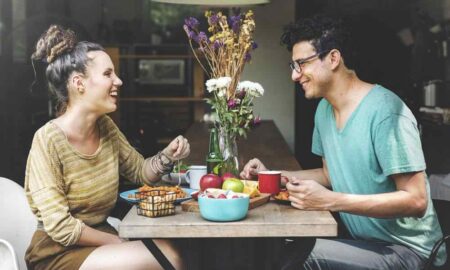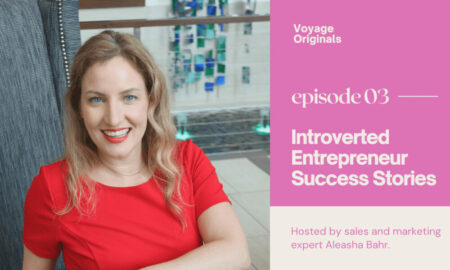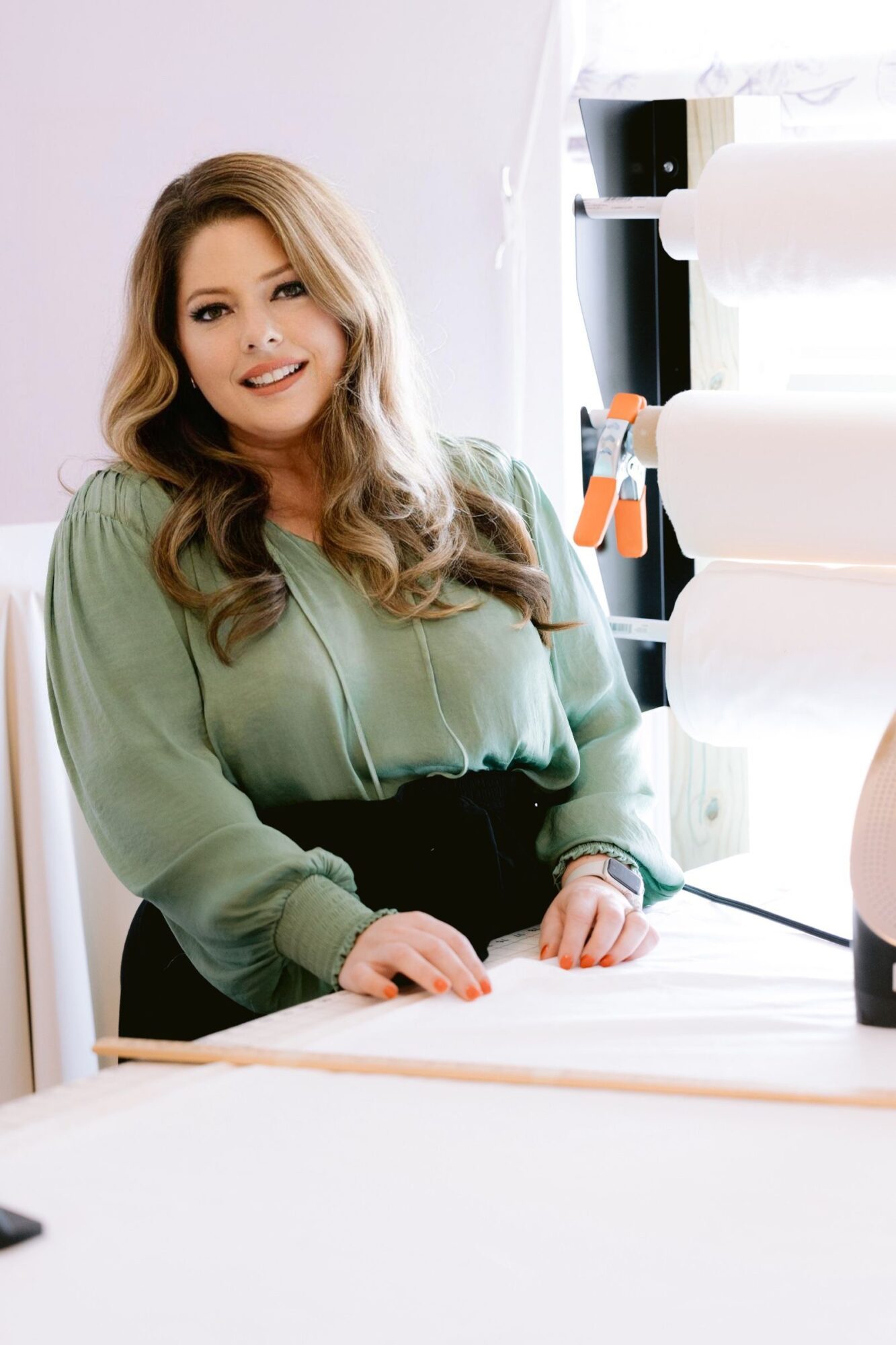

Today we’d like to introduce you to Angie Seekamp.
Alright, so thank you so much for sharing your story and insight with our readers. To kick things off, can you tell us a bit about how you got started?
I’m a fourth-generation seamstress and needleworker. I sewed on my first button when I was about five years old and just never stopped. I come from a very creative, hands-on family on both sides. Quilting, sewing, embroidery, knitting, crochet, painting, drawing — making things has always been part of my life. I’ve always joked that I’m kind of a Jane-of-all-trades.
Another big part of my upbringing was interior design. My grandmother never missed an issue of a shelter magazine, and we’d talk about fabrics, colors, and design trends the way other families talk about football. Those conversations stuck with me and really shaped the way I see the world.
A few years ago, I went to the Kips Bay Show House in Dallas, and something just clicked. I was naturally drawn to the drapery and soft goods and ended up chatting with several designers who encouraged me to start a workroom. They mentioned there weren’t many younger people getting into this side of the industry, and I saw a real opportunity to use my skills as a seamstress to start a business. That’s how St. Hyacinth Custom Drapery began.
I’m sure it wasn’t obstacle-free, but would you say the journey has been fairly smooth so far?
It really has been a smooth road. I genuinely love what I do, and I think that makes all the difference. I’ve always been entrepreneurial by nature. I’ve started other businesses before, so this wasn’t my first time building something from the ground up. But this one feels especially meaningful because it combines my love of craftsmanship, design, and working closely with creative people. It’s been incredibly rewarding
As you know, we’re big fans of you and your work. For our readers who might not be as familiar what can you tell them about what you do?
I specialize in custom home décor soft goods. Things like drapery, roman shades, cushions, and pillows.
What makes my workroom a little unusual is that many of my pieces are fabricated using old-world European methods of construction that rely heavily on hand sewing. These really are couture pieces. It’s a slower process, but the quality is unmistakable once you see the finished pieces installed. It creates a look and feel that you just can’t achieve with shortcuts or high-volume production models.
On projects, I’m not just an order taker but a collaborator and an expert in this space. I take the time to understand what my clients are trying to achieve and help guide them on the best way to get there. Things like linings, hardware, and fabric content all make a difference, and my role is to make sure those technical details support the overall design vision
We’d love to hear about how you think about risk taking?
When I decided to focus on English and European methods of fabrication, there were some experienced workrooms that advised me against it. They said people here in the U.S. wouldn’t be willing to pay for that level of craftsmanship, that it was too time-consuming and just didn’t make sense in the U.S. market.
But I felt pretty strongly about it. That kind of detailed, hand-sewn work is what I love most, and I knew there had to be designers and clients out there who valued that too. The market for couture window treatments is definitely smaller, but it’s there — and the people who care about quality are willing to pay for it.
Looking back, it was definitely a risk to go against what everyone was telling me, but it’s one I’m really glad I took. It let me build something that feels authentic to me and stay true to the level of work I believe in.
Contact Info:
- Website: https://www.sthyacinthcustomdrapery.com
- Instagram: https://www.instagram.com/sthyacinthcustomdrapery/?hl=en
- Facebook: https://www.facebook.com/people/St-Hyacinth-Custom-Drapery/61555434321190/
